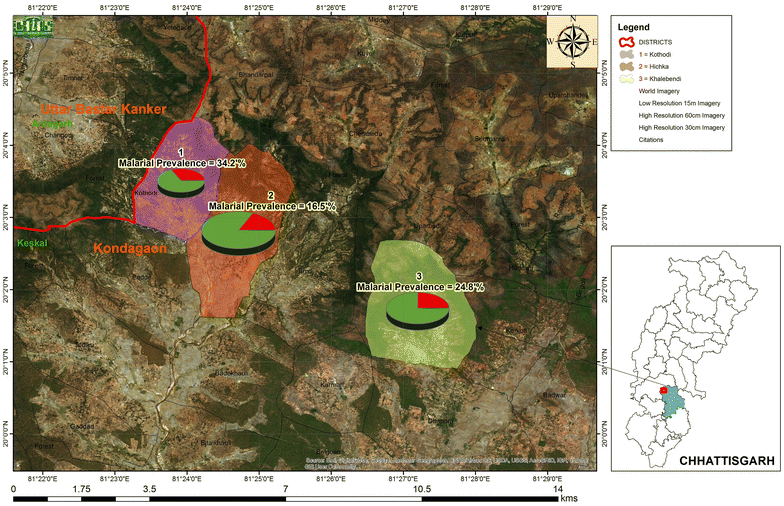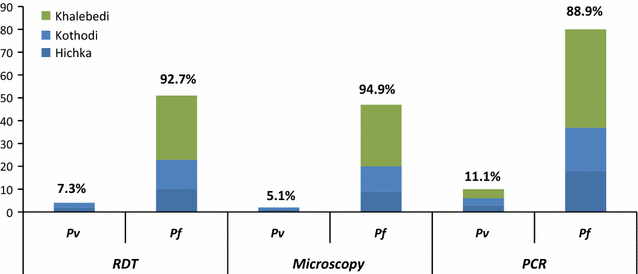Additional burden of asymptomatic and sub-patent malaria infections during low transmission season in forested tribal villages in Chhattisgarh, India
- PMID: 28789682
- PMCID: PMC5549400
- DOI: 10.1186/s12936-017-1968-8
Additional burden of asymptomatic and sub-patent malaria infections during low transmission season in forested tribal villages in Chhattisgarh, India
Abstract
Background: The burden of sub-patent malaria is difficult to recognize in low endemic areas due to limitation of diagnostic tools, and techniques. Polymerase chain reaction (PCR), a molecular based technique, is one of the key methods for detection of low parasite density infections. The study objective was to assess the additional burden of asymptomatic and sub-patent malaria infection among tribal populations inhabiting three endemic villages in Keshkal sub-district, Chhattisgarh, India. A cross-sectional survey was conducted in March-June 2016, during the low transmission season, to measure and compare prevalence of malaria infection using three diagnostics: rapid diagnostic test, microscopy and nested-PCR.
Results: Out of 437 individuals enrolled in the study, 103 (23.6%) were malaria positive by PCR and/or microscopy of whom 89.3% were Plasmodium falciparum cases, 77.7% were afebrile and 35.9% had sub-patent infections.
Conclusions: A substantial number of asymptomatic and sub-patent malaria infections were identified in the survey. Hence, strategies for identifying and reducing the hidden burden of asymptomatic and sub-patent infections should focus on forest rural tribal areas using more sensitive molecular diagnostic methods to curtail malaria transmission.
Keywords: Asymptomatic; Chhattisgarh; India; Malaria; PCR; Sub-patent.
Figures
References
-
- WHO. World Malaria Report 2015. Geneva, World Health Organization, 2015. http://www.who.int/malaria/publications/world-malaria-report-2015/report.... Accessed 05 July 2016.
-
- WHO. Global technical strategy for malaria 2016–2030. Geneva, World Health Organization, 2015 http://www.who.int/malaria/areas/global_technical_strategy/en/. Accessed 05 July 2016.
-
- National Vector Borne Disease Control Programme. Malaria Situation in India. National Vector Borne Disease Control Programme (NVBDCP), 2016. http://nvbdcp.gov.in/Doc/malaria-situation-Oct16.pdf. Accessed 10 October 2016.
-
- National Vector Borne Disease Control Programme. National Framework for Malaria Elimination In India (2016–2030). National Vector Borne Disease Control Programme (NVBDCP), 2016. http://nvbdcp.gov.in/Doc/National-framework-for-malaria-elimination-in-I.... Accessed 03 August 2016.
Publication types
MeSH terms
Grants and funding
LinkOut - more resources
Full Text Sources
Other Literature Sources
Medical



